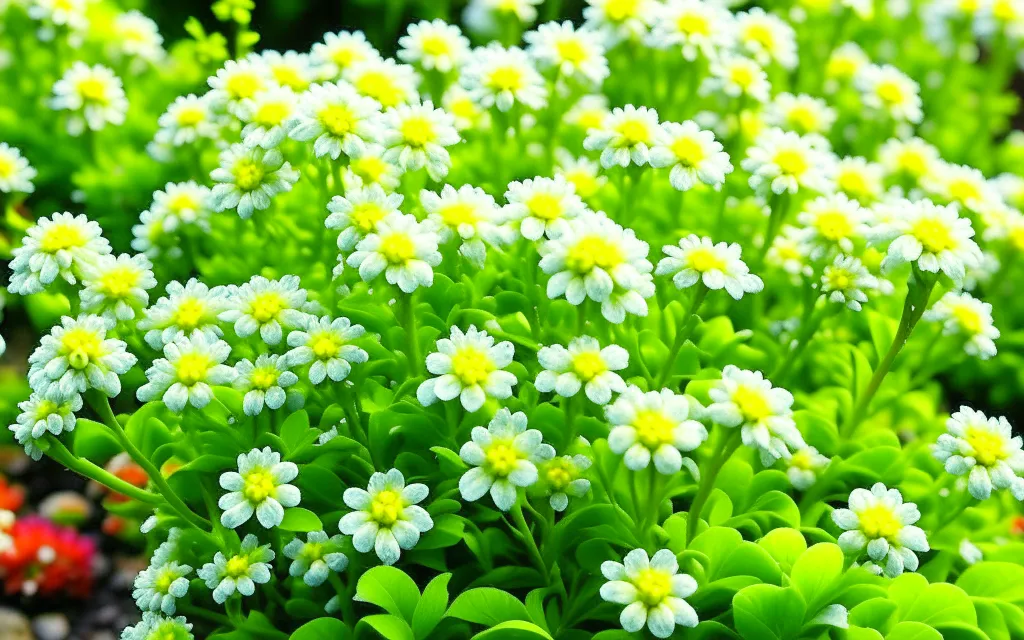
All About Alyssum: A Gardener’s Delight
Hey there, fellow garden enthusiast! If you’re looking to spice up your green space, let me introduce you to a little gem called Alyssum. This charming plant, known for its clusters of tiny, fragrant flowers, not only adds beauty to your garden but also has some fantastic growing requirements that are easy to meet, even if you’re new to gardening.
Getting to Know Alyssum
Alyssum is a hardy annual flower, often characterized by its sweet scent and dense clusters of white, purple, or yellow blooms. You can plant it in spring, and it thrives in full sun or partial shade. Isn’t that convenient? It prefers well-drained soil and doesn’t need much fussing over. Historically, it’s been adored for hundreds of years, first cultivated in the Mediterranean region and later spreading across the world.
Now, when it comes to growing Alyssum, you can get a bit creative. Have you ever thought about vertical gardening? Hanging baskets or wall containers can breathe life into small spaces, making Alyssum an excellent choice. Beyond traditional planting, you can even use it as a ground cover to keep those pesky weeds at bay!
The Wonderful World of Alyssum Varieties
There are numerous variants of Alyssum, but two popular ones I can’t help but recommend are Sweet Alyssum (Lobularia maritima) and Gold Dust Alyssum (Alyssum saxatile). Sweet Alyssum is known for its delightful scent, often attracting beneficial pollinators. On the other hand, Gold Dust has a robust growth habit and brings a warm yellow hue to your garden. Both are easy to grow and perfect for any approach you may take!
Companion Planting with Alyssum
Now let’s dive into a fascinating part of gardening: companion planting. You might be wondering, “What are the benefits of companion planting for Alyssum?” Well, let me tell you—companion planting can enhance growth, repel pests, and even improve flavor. When you strategically plant Alyssum alongside specific plants, you can create a harmonious ecosystem in your garden that benefits everyone involved.
Companion Planting for Alyssum
If you’re curious about good companions for Alyssum, I’ve got you covered! Two fantastic options are Brassicas and Lettuce. Let’s take a closer look.
Avoiding Companions
Interestingly enough, there aren’t any specific plants you must avoid when growing Alyssum. However, it’s a wise idea to keep a bit of a buffer zone when planting. A general rule is to leave about 12-18 inches between Alyssum and your Brassicas or Lettuce to ensure each plant has enough air circulation and nutrients without overcrowding each other. This way, they can flourish side by side without any squabbles over space!
Conclusion
Incorporating Alyssum into your garden is not just about enhancing beauty; it’s about creating a beneficial community for all your plants. Sweet Alyssum mingling with Brassicas and Lettuce can result in bountiful blooms and delicious harvests. So next time you’re in the garden, consider adding this remarkable little flower and revel in the harmony it fosters. Happy gardening!
Companion Planting with Alyssum: Spacing Guidelines and Tips
Hey there, fellow gardener! If you’re as passionate about growing plants as I am, you’ve probably heard about the benefits of companion planting. It’s true—certain plants just seem to thrive better when they’re near each other. Today, let’s dive into some solid planting guidelines for companion plants to Alyssum. Remember, these are just foundations. You’ll want to adjust things based on your specific garden conditions, so feel free to get experimental!
General Spacing Recommendations for Companion Plants
1. Brassicas (Cabbage family)
General Rule: Most Brassicas should be spaced about 12-24 inches apart from Alyssum. These lovely plants, like cabbage and broccoli, benefit from the presence of Alyssum, which attracts beneficial insects that can keep pests at bay.
2. Lettuce
General Rule: For lettuce, you’ll want to give a bit more breathing room—6-12 inches from Alyssum. Lettuce grows quickly, so I find that keeping adequate space helps prevent mildew and improves air circulation.
3. Tall Companions
General Rule: When incorporating taller companions—like sunflowers or corn—aim for a distance of around 18-36 inches from your Alyssum. It’s all about ensuring that your Alyssum gets enough sunlight and isn’t crowded out!
4. Low-Growing Companions
General Rule: For low-growing plants such as creeping thyme or dwarf basil, give them about 6-12 inches from Alyssum. They won’t shade your Alyssum, and you’ll be rewarded with a lovely layered look in your garden.
5. Strongly Aromatic Companions
General Rule: Aromatic herbs like rosemary or sage should be spaced 12-18 inches from Alyssum. These herbs not only add flavor to your meals but can deter pests with their strong scents—what’s not to love?
6. Nutrient-Heavy Feeders
General Rule: For heavy feeders like tomatoes or peppers, allow a good distance of about 18-24 inches from Alyssum. It gives them enough room to grow while also benefiting from the helpful pollinators that Alyssum attracts.
7. Spreading or Vining Companions
General Rule: Vining plants like cucumbers should be spaced around 24-36 inches from Alyssum. You don’t want those tendrils to smother your Alyssum while trying to reach for the sun!
Tip: Always adjust based on your unique garden conditions and the mature sizes of your chosen companion plants. For instance, if you notice that a plant is particularly large or spreading vigorously, you might want to give it a little more space than usual.
Summary of Companion Plants
Brassicas
Beyond Alyssum, Brassicas like cabbage and broccoli pair well with plants such as kale and carrots. They thrive in the presence of aromatic herbs like dill, which can help deter pests and promote healthy growth.
Lettuce
Lettuce is not just friendly to Alyssum; it also grows well alongside radishes and chervil. These combinations can maximize space, ensuring you get a bountiful harvest while enjoying the flavors of your homegrown produce.
Gardening is an ongoing adventure, and I hope these tips help you cultivate a thriving garden. Now, go out there and enjoy planting your Alyssum alongside its perfect companions! Happy gardening!

Leave a Reply